As part of our big trip from Bogota to Lima, we traveled to this small town in Southern Colombia to see the UNESCO World Heritage sites that make up a large part of Isnos and San Agustin. This is the first of the promised series of articles about the region. Let’s take a look at the Alto de las Piedras archeology site located in Isnos, Colombia.
History of Alto de Las Piedras
Located to the north of the other archeological sites in the park, Alto de Las Piedras was both a residential center and burial ground for almost 2000 years. The residential period lasted almost 1000 years, terminating around 1 CE. Following this period, local peoples constructed and maintained burial mounds and tombs over a period of about 900 years. The area then seems to have been abandoned. The archeology remains lay largely undisturbed until the 1930s when they were systematically looted. Following the sites’ inclusion in the San Agustin Archeological Park in 1970, a detailed excavation was completed in 1975-1976 and the site was reconstructed in the 1990s. No mention was made as to what was done with the remains buried in the various mounds or if they were even present when the site was excavated.
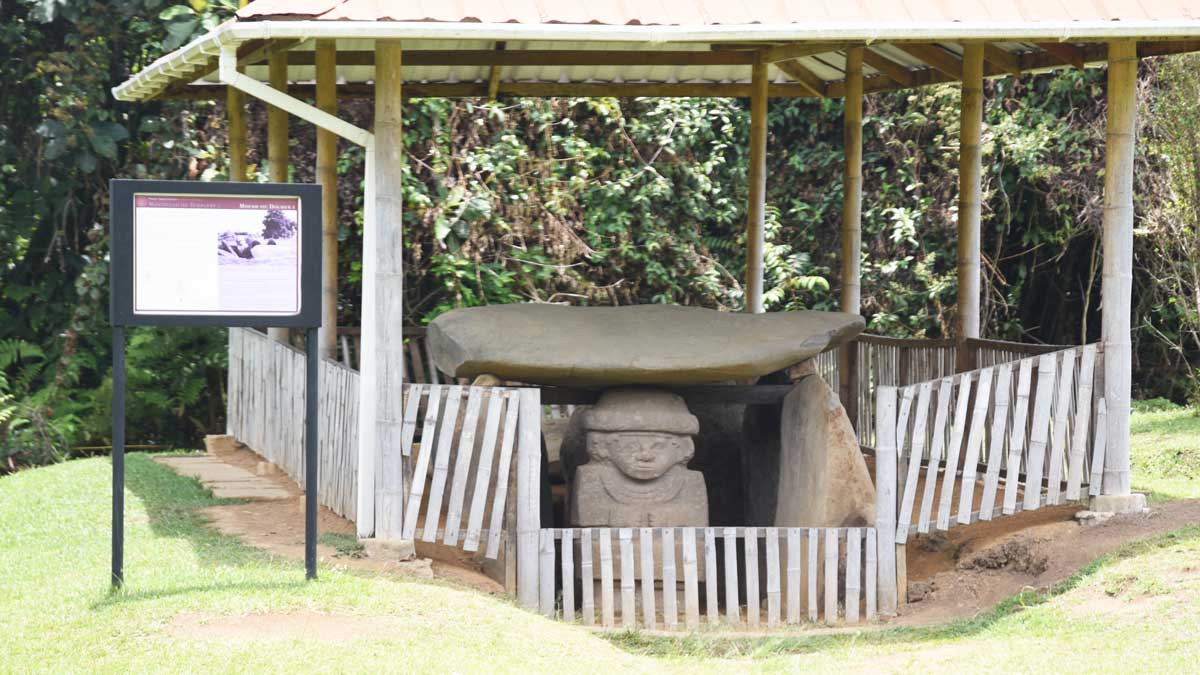
So What’s There To See At Alto de Las Piedras?
Including the smallest of the sites included in the park, there are four burial mounds with associated statuary at this location. One can also see carvings in the stone of mound three. According to the park signs, two of the tombs have painted stones inside the grave site. Unfortunately, we were not able to see any of these stones due to the layout of the reconstructed sites.
Statues with animal and human characteristics
The burial site at Mound 1 is simple, but the statue is pretty interesting. A mix of animal and human characteristics, the statue is very similar to one that we’ll see at the main archeological park in San Agustin. On its frontside, two human-like figures stand one atop the other. The lower figure could also be a jaguar based on his sharpened incisors. When seen from the side, the top figure appears to be a lizard. Yet another human face is carved onto the backside of the lizard.

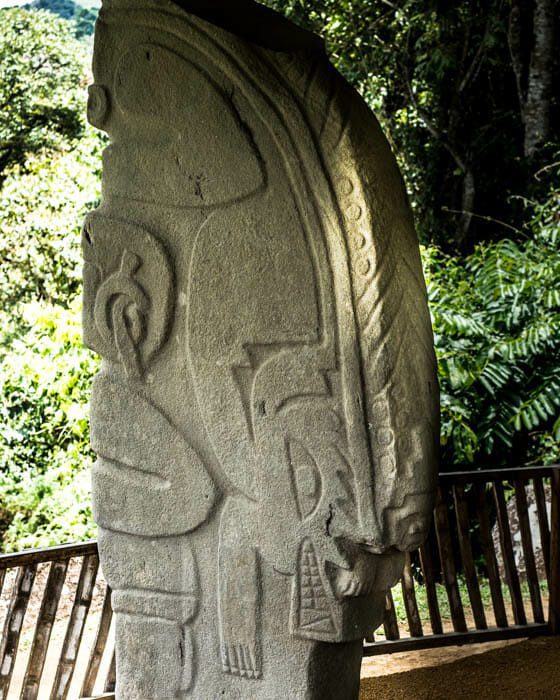
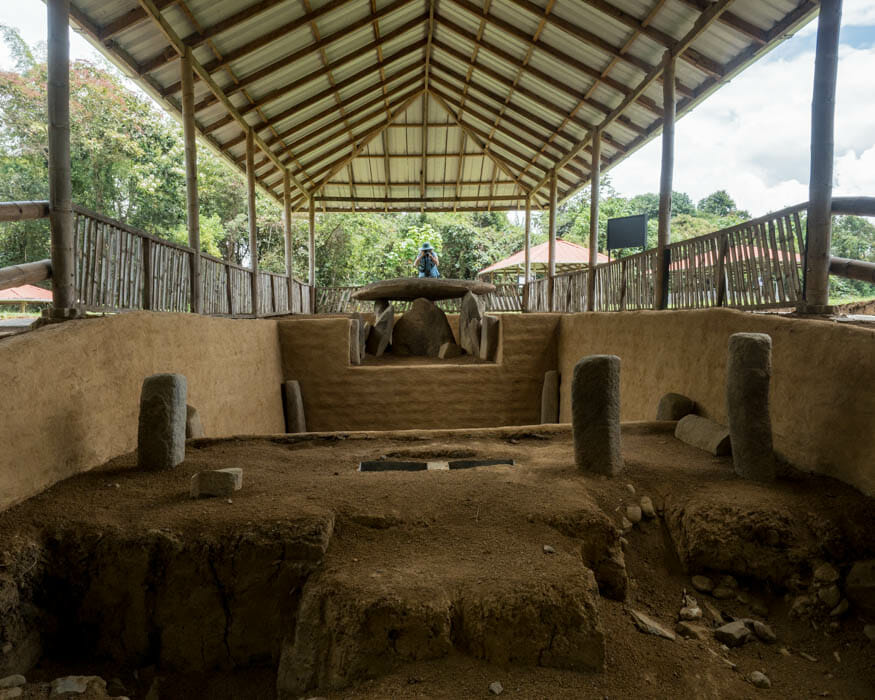
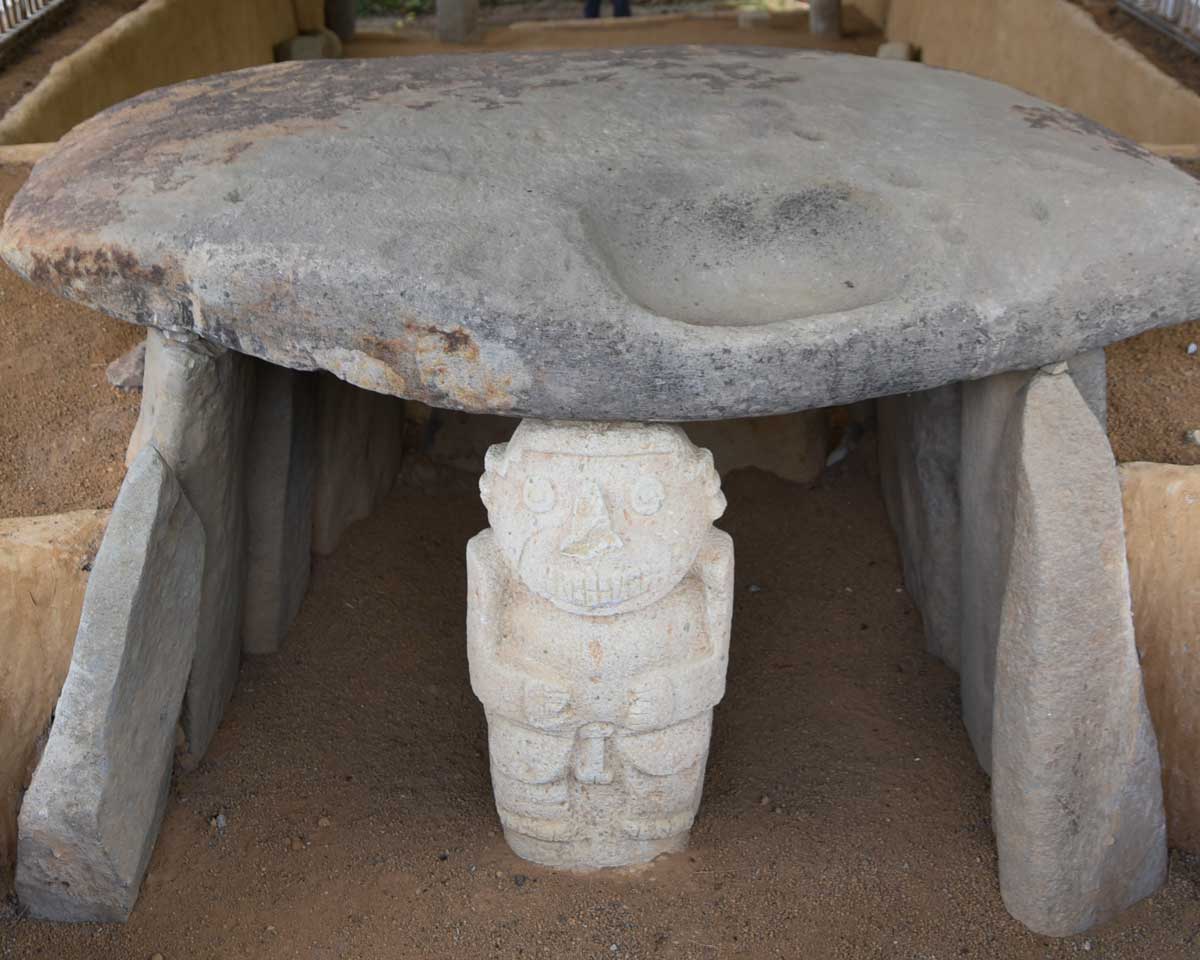



Statues that show how the people looked
Mound 3 contains two dolmens. In the first, the statue depicts a person wearing what might be the typical dress of this society. The remaining statuary follows this trend. Significant elements of these statues include the braided head dress, necklace, bracelets and wide belt. This dolmen also contains the only petroglyphs noted at Alto de Las Piedras. The petroglyphs include figures that look like monkeys.



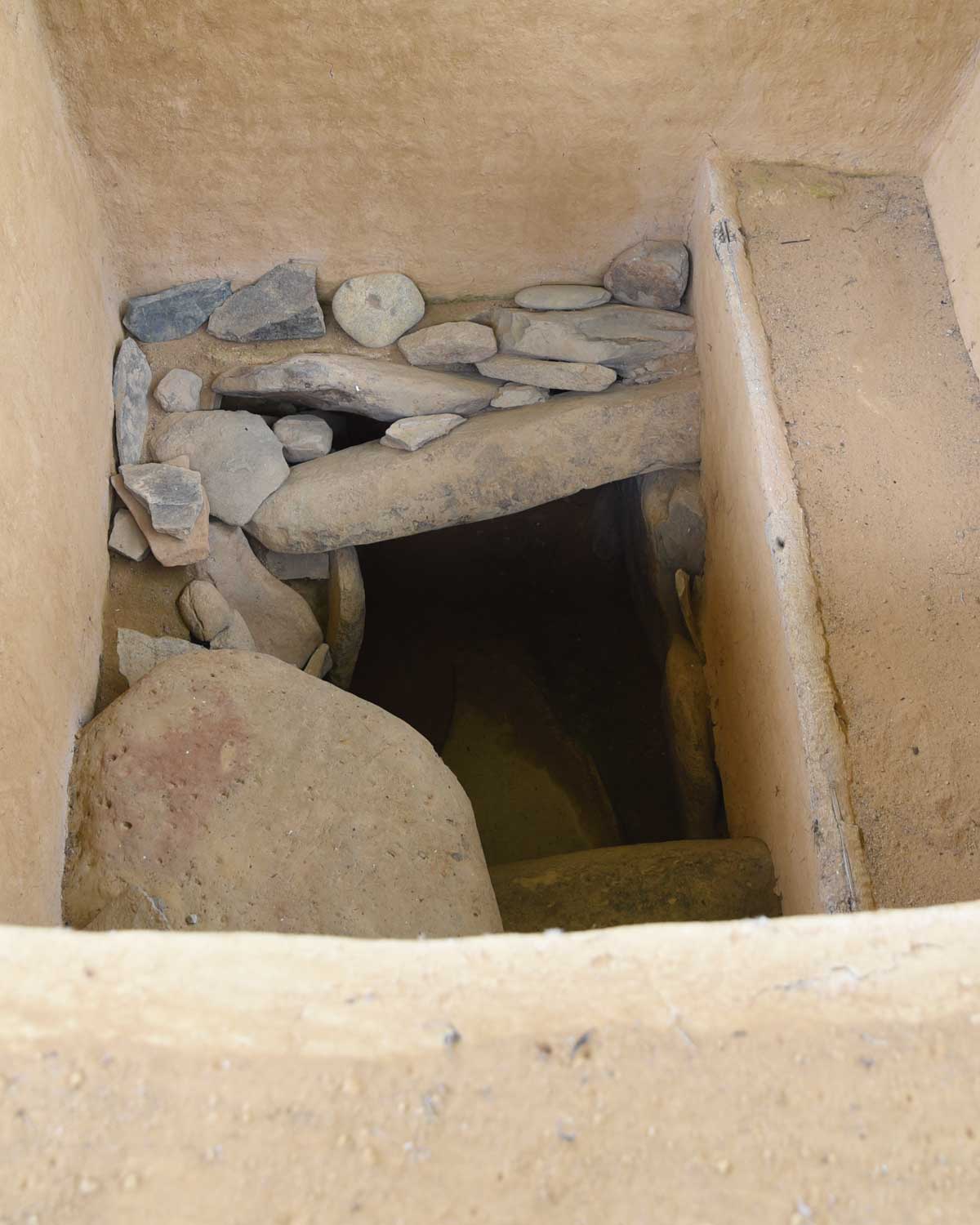



Information For Your Trip
San Agustin and San Jose de Isnos are located in the Huila Department of Colombia. We arrived by bus from Popayán, a journey of about 4.5 hours on a dirt road. Cost was about US$11 per person.
There are only two bus companies operating from Popayán to San Agustín. We recommend Sotracauca SA. Their driver was safe and timely, a valuable combination. We do not recommend Cootransuila as their driver was reckless, endangering the lives of both passengers and pedestrians along the route.
Other visitors also arrive by private transport (about US$160 one way from Popayán) or by plane to the airport in Pitalito.

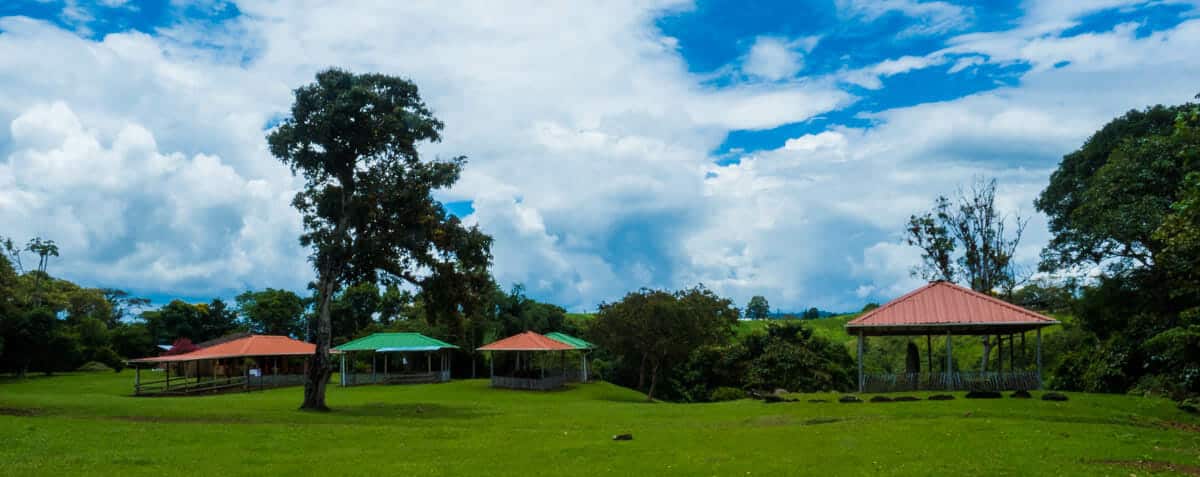
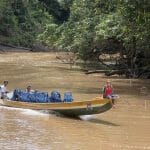

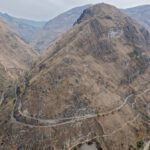

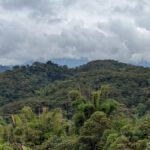

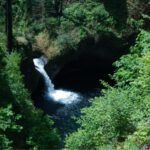




0 comentarios